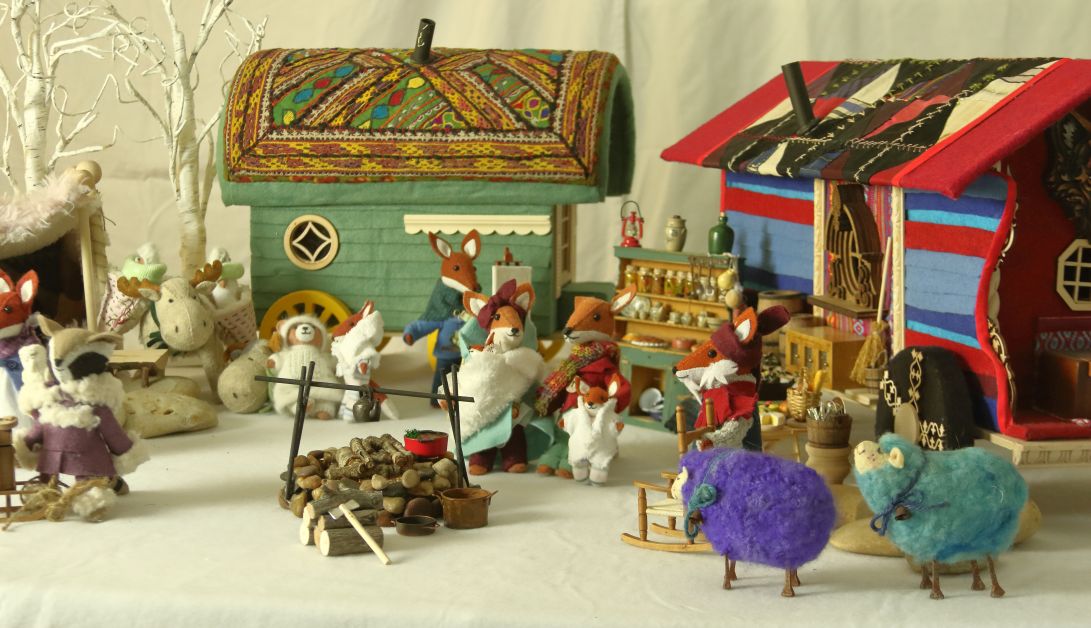Drive down any quiet residential street in Champaign or Urbana. If you are in one of the older parts of town, you will see row after row of ordinary houses — nothing fancy or ostentatious. Yet without knowing it, you might be driving past the house of a world famous author or a Nobel Prize winner.
That may not be surprising in a university town.
But these ordinary-looking houses could also be hiding human treasures other than literary or scientific ones, people who are nationally, even internationally renowned for some esoteric talent that the rest of us could hardly imagine having.
Barbara Schoenoff is one such person; her talent is making dolls.
You may well be thinking, “I’ve seen dolls in toy stores. There does not seem to be much talent involved in making them.” And for mass produced dolls, you’d be right. Schoenoff’s dolls, however, take dollmaking into an entirely different realm.
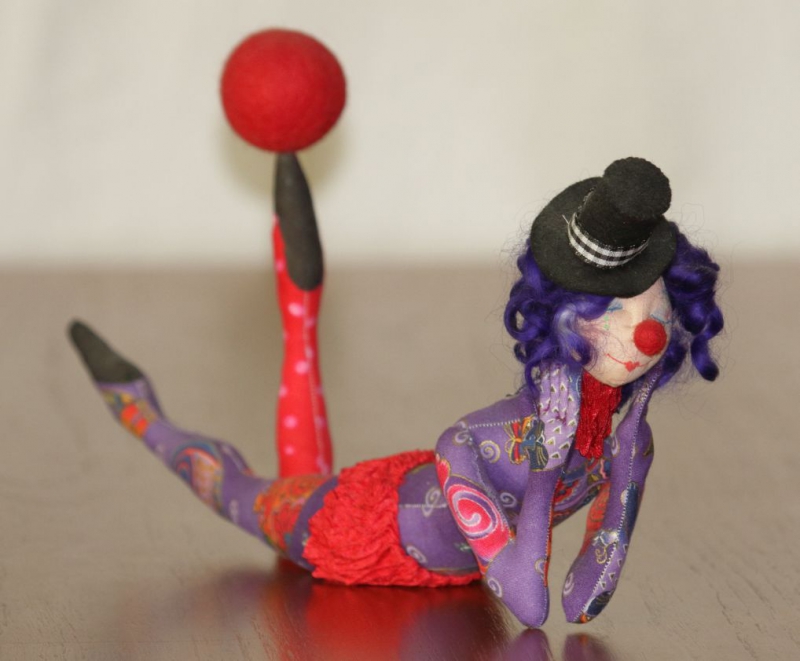
© Barbara Schoenhoff, Tired Tumbler, 2014. Photo by Fred Delcomyn
Take a look at this circus doll, Tired Tumbler. Tired Tumbler is obviously not a child’s toy; it’s a work of art. Sure, any young boy or girl would love to play with this doll, making up stories about her life, her friends, and why she’s tired. But the attention to detail, from her pose and the bright red ball balanced on one toe to her clothes and the expression on her face, makes Tired Tumbler a piece worthy of space on a display shelf, not just space in a toy box.
At this point you may be wondering how someone gets into dollmaking. In Schoenoff’s case her fascination with dolls started early. As she notes, “I’ve always been a doll girl.” According to her mother, when Schoenoff was a toddler she would pretend one pinky finger was a tiny doll and would play with that.
Her fascination continued into adulthood, so after graduating college she applied to work for Madame Alexander Doll Company. The world of doll-making should thank the company for not hiring Schoenoff. It is unlikely that she would have become a doll-maker if they had.
Instead, she went to graduate school to study costume design, earning a Master of Fine Arts degree from Northwestern University.
After her graduate work, Schoenoff taught costume design here and there as well as doing design work herself. Eventually, Schoenoff moved to Champaign with her husband. There she secured a position at Londa’s, a shop that sold fabric and offered instruction in sewing. There her role was to teach classes and to sell sewing machines.
You might not think that selling sewing machines would have much to do with doll-making, but actually, that job enabled her to buy a top-of-the-line sewing machine for herself. The icing on the cake, so to speak, was that experts with knowledge of advanced sewing techniques came to Londa’s to teach workshops.
Schoenoff lapped it all up, taking full advantage of all that the professionals had to offer.
After Londa’s closed, Schoenoff took a job working for the University of Illinois. In her spare time, though, she began to fulfill her life’s dream by making dolls.
Her early dolls were relatively simple. In fact, she says that by her current standards, they were really not very good. As her skills grew, though, she began to make more elaborate dolls, dolls that were not only interesting and beautiful in their own right, but also dolls that enabled Schoenoff to put her training in costume design to good use.
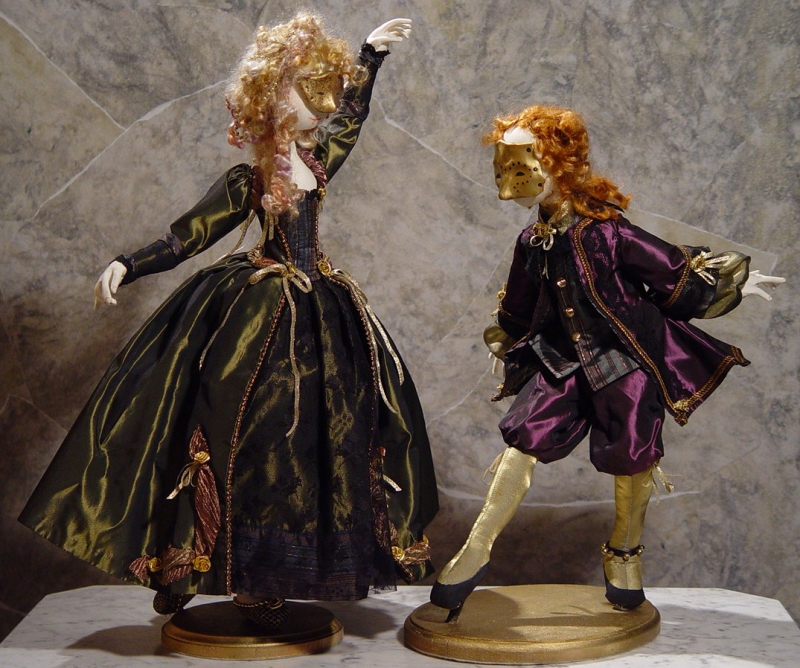
© Barbara Schoenhoff, Venetian Dancers, 2005. Photo provided by Barbara Schoenoff
Venetian Dancers show what can come from the marriage of skillful dollmaking with an eye and talent for costumes. Here, the bodies, faces, and the poses of the dolls is only half the story. The elaborate and intricate period costumes are the other half. The combination is a masterpiece that could comfortably sit as a decoration in someone’s home or as part of an exhibit on dollmaking in a museum.
Where does Schoenoff get the ideas for her dolls? Some spring to mind almost completely based on someone or something that Schoenoff sees. In those cases, it is then just (just!) a matter of executing the concept in real material. Sometimes ideas for a doll are triggered by something Schoenoff has seen but is not fully formed and so not made right away. It may be only after many years that something finally clicks so the original concept can be realized in stuffing and fabric.
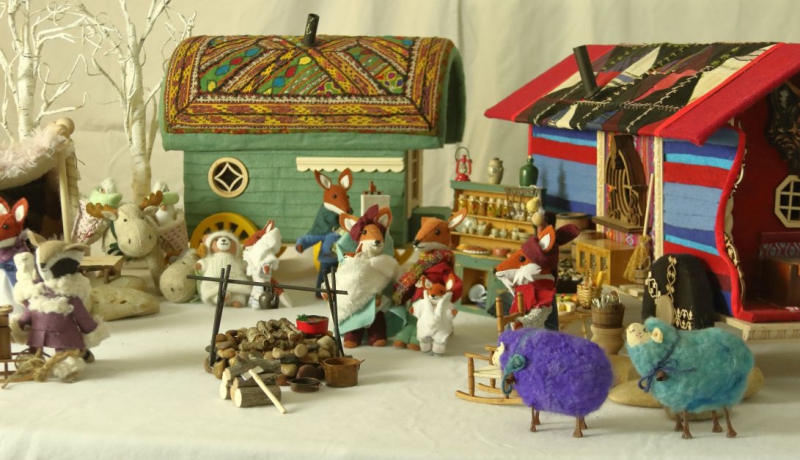
© Barbara Schoenhoff, Rendezvous , 2022. Photo by Fred Delcomyn
The range of Schoenoff’s creativity is perfectly illustrated by her latest project, a grouping called Rendezvous. Comprising over 300 individual pieces, the piece is an imaginary meeting of travelers from around the world. Every individual, every background piece, from the woolly mammoth who pulls one of the wagons to a small ax used to split wood for the fire, has a story associated with it and a specific reason for being in the panorama.
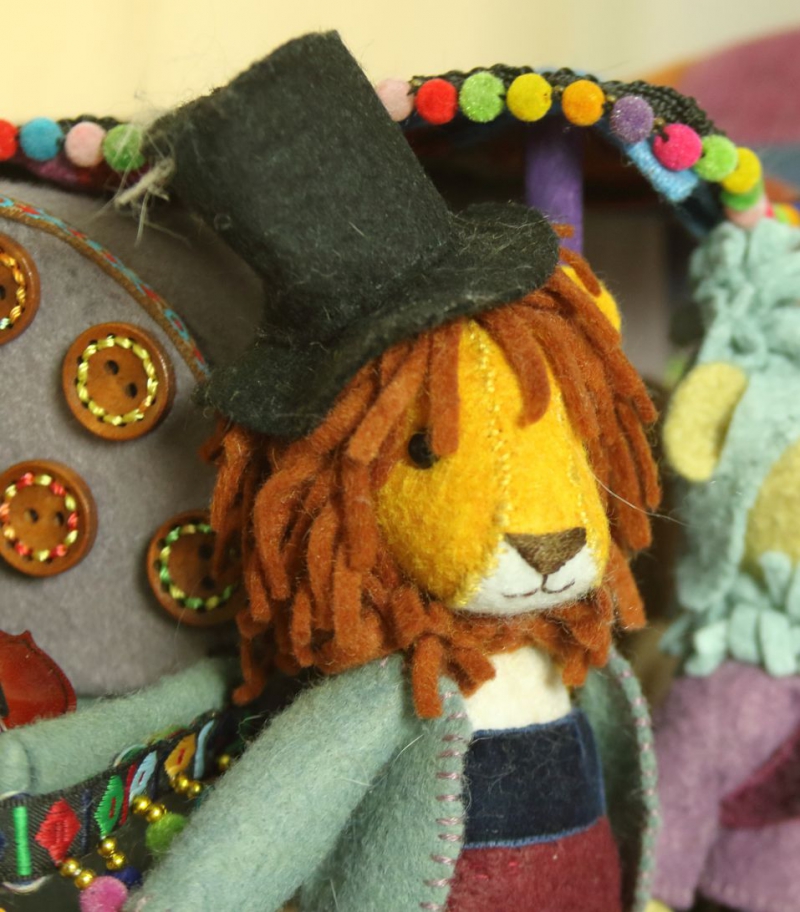
© Barbara Schoenhoff, Giuseppe the Lion , 2022. Photo by Fred Delcomyn
For example, Giuseppe the lionis a tinker. But, Schoenoff says, “he’s dreadful at it, just awful.” Nevertheless, the others cover for him and keep sending him enough business that he can stay with the group. The reason? He is a superb violinist, able to play anything and his companions value his talent a great deal.
Like Giuseppe, all of Schoenoff’s dolls have stories: who they are, where they came from, how they come to be doing what they are doing. In Schoenoff’s mind, each doll’s story is just as much part of the doll as the costume it wears. For someone looking at one of her dolls, the story becomes an enchanting part of the entire experience.
As current president of ODACA, the Original Doll Artist Council of America, Schoenoff has reached the top of her chosen vocation, recognized by her peers as a dollmaker par excellence.
And yet here she is, living a quiet and for the most part unrecognized life in Champaign, a true hidden treasure.








